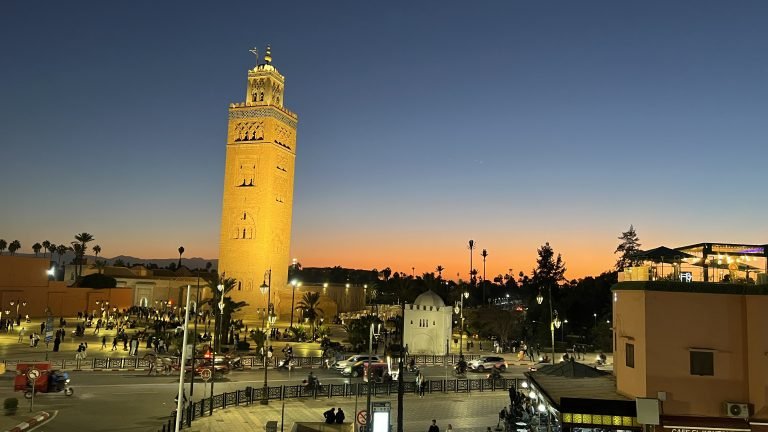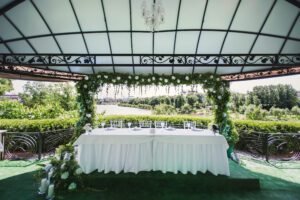This post may contain affiliate links, which means I may earn a small commission from purchased products at no additional cost to you. See my full disclosure here.
Marrakech is a city that leaves a strong impression the moment you arrive. The streets are alive with color, movement, and scent—fresh spices, orange blossoms, and grilled meats fill the air. In just 2 days in Marrakech, you can walk through centuries-old markets, visit peaceful gardens, eat meals that linger in your memory, and get a feel for daily life in one of Morocco’s most iconic cities. This guide is built for travelers who want to experience both the must-see landmarks and the more personal, less touristy sides of Marrakech. You’ll come away with a better sense of the culture, the rhythm of the city, and what makes Marrakech truly special.
Table of Contents
Essential Tips for First-Time Visitors
Traveling to Marrakech for the first time can feel a little overwhelming. Here are a few basics to help make your trip smoother:
- Etiquette: Saying “Salam Alaikum” when greeting someone and “Shukran” to say thank you is appreciated. Locals are warm and welcoming, and small efforts go a long way.
- Currency: Morocco uses the Dirham (MAD). You’ll find that some places take cards, but it’s smart to carry cash for taxis, markets, and smaller shops.
- Haggling: Bargaining is expected in souks. Be kind, keep it light, and don’t be afraid to walk away—it’s part of the experience.
- Getting Around: Taxis are everywhere, but always agree on the fare before getting in. Most places in the Medina are best reached on foot anyway.
- What to Wear: Keep your clothing lightweight and modest. Long pants or skirts and short-sleeved shirts are comfortable and respectful. A scarf is helpful for visiting religious areas.
Day 1 Itinerary: Exploring the Heart of Marrakech
Djemaa el-Fna
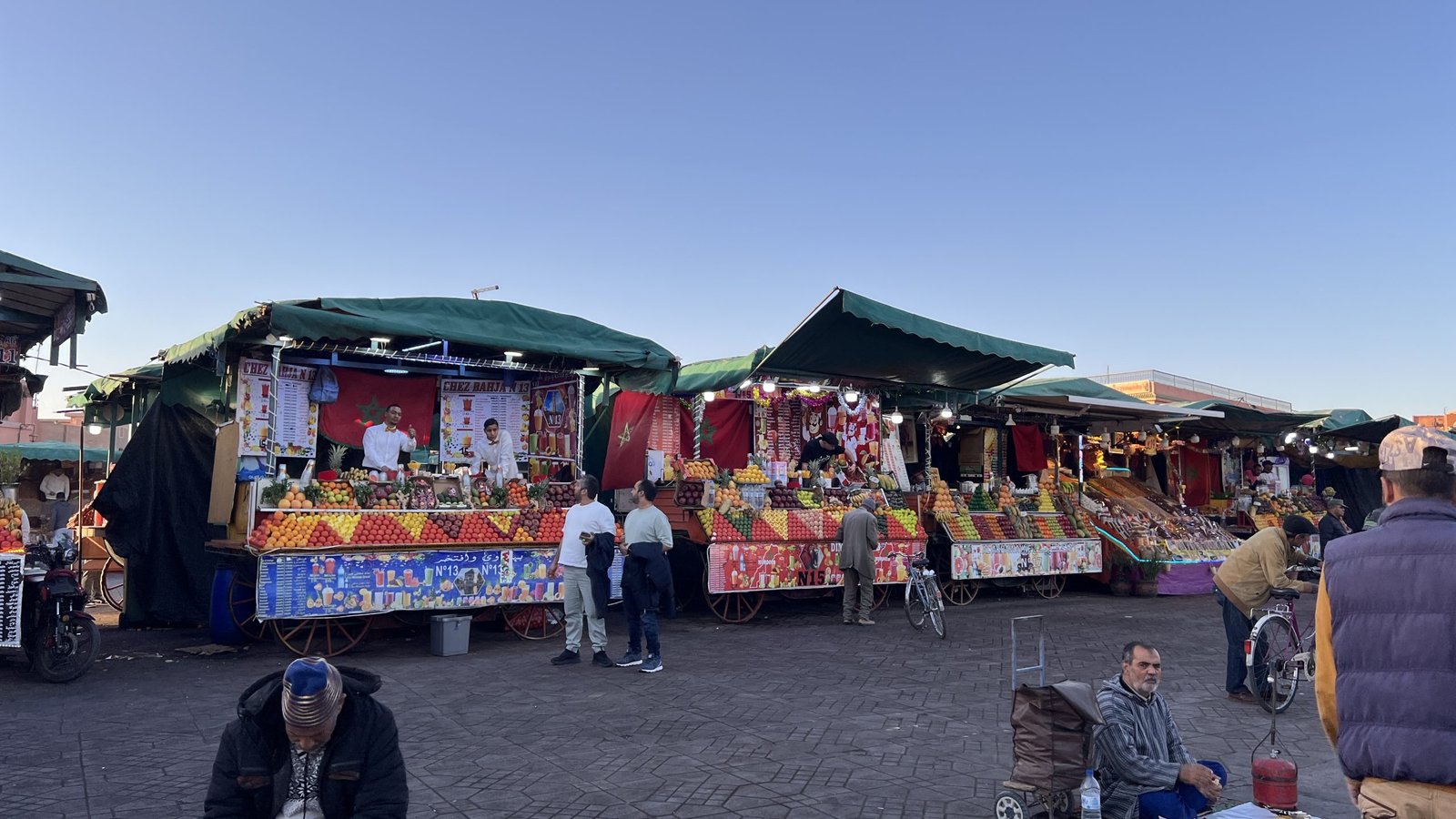
Start your trip at Djemaa el-Fna, the city’s main square. In the morning, grab a fresh glass of orange juice and take in the calm before the crowds arrive.
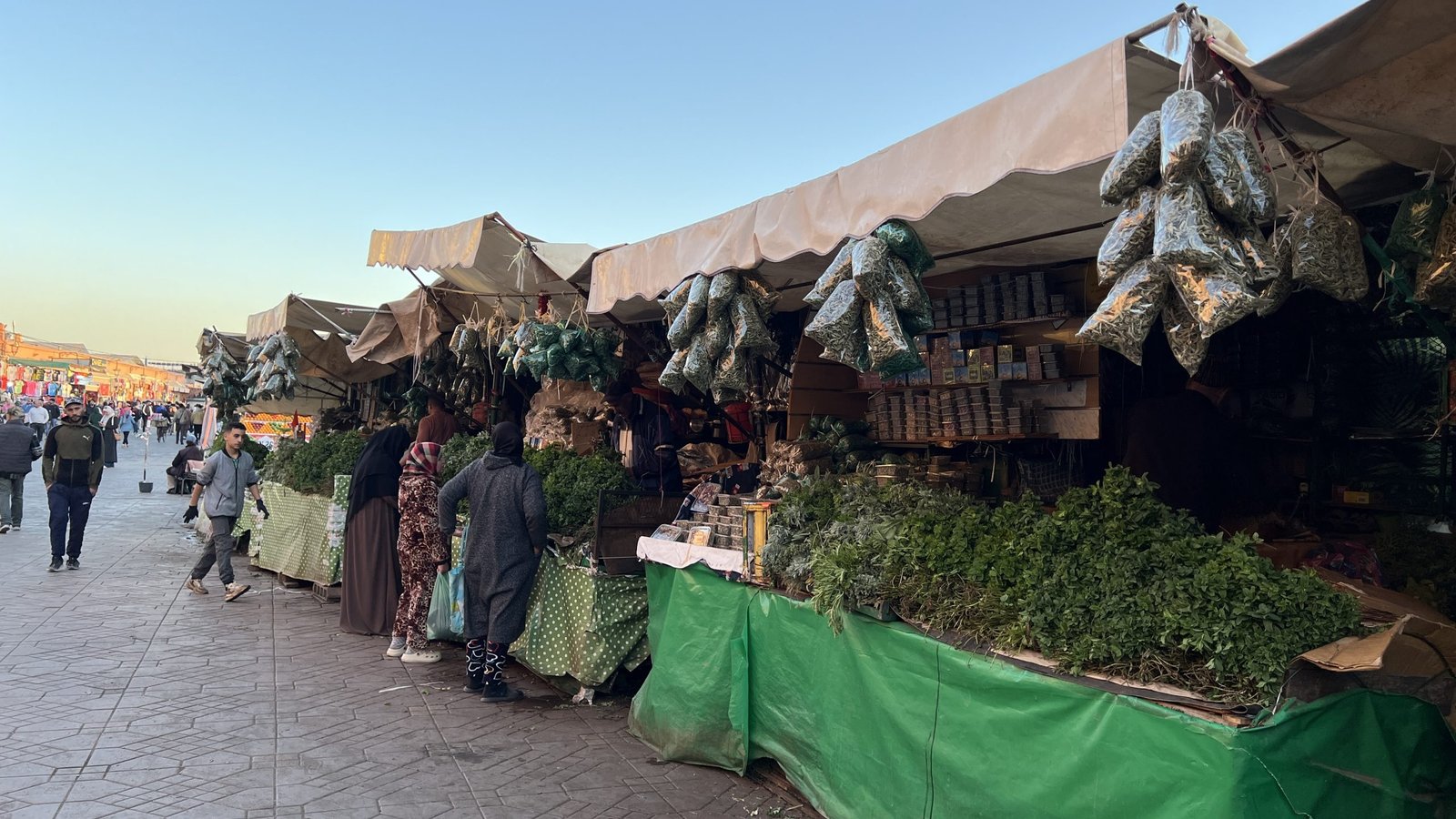
By evening, it turns into a lively maze of food stalls, music, and storytelling. A place that feels like a celebration every night.
Koutoubia Mosque
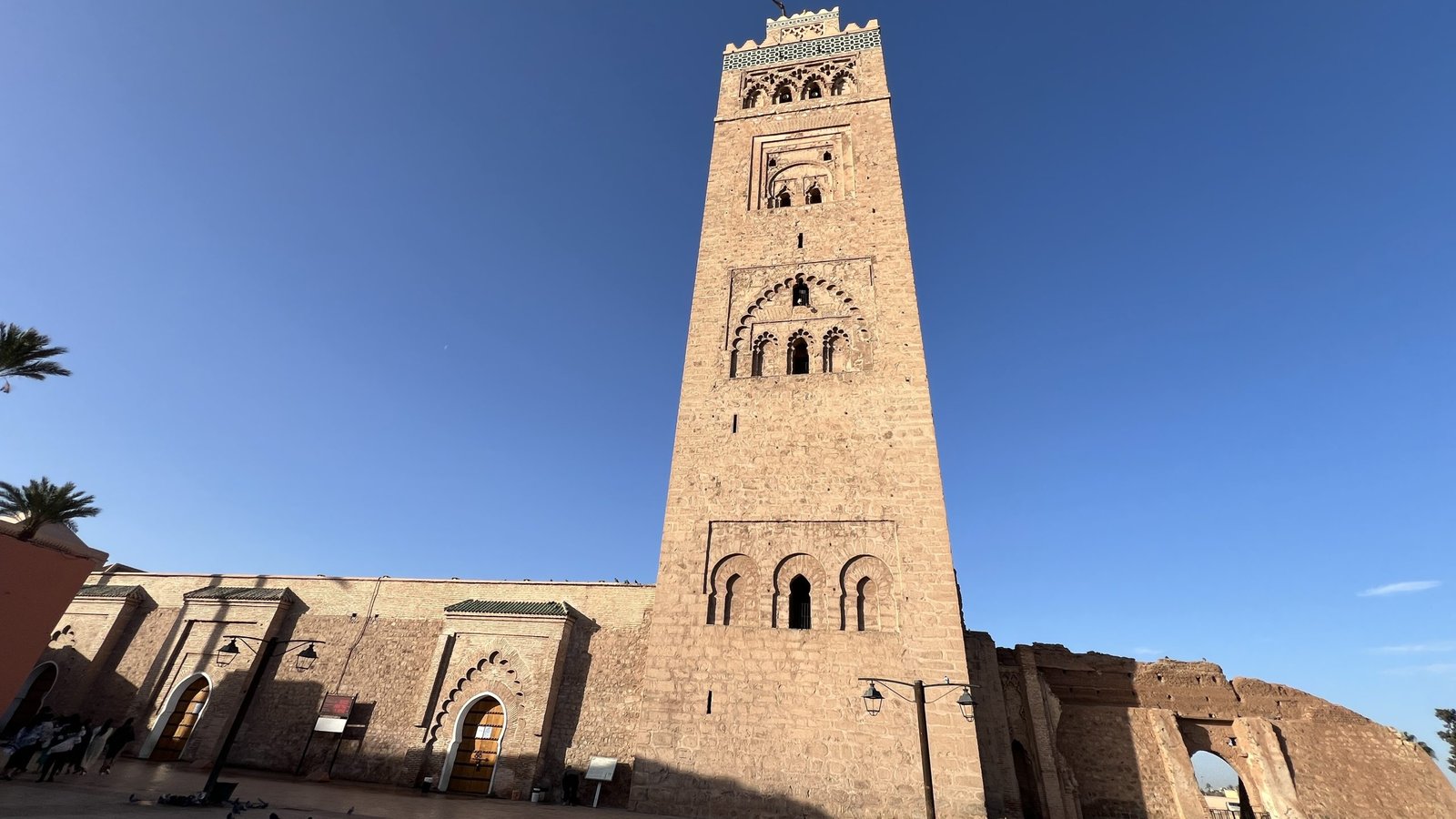
Next, make your way to the Koutoubia Mosque, the largest mosque in Marrakech and a stunning example of Almohad architecture.
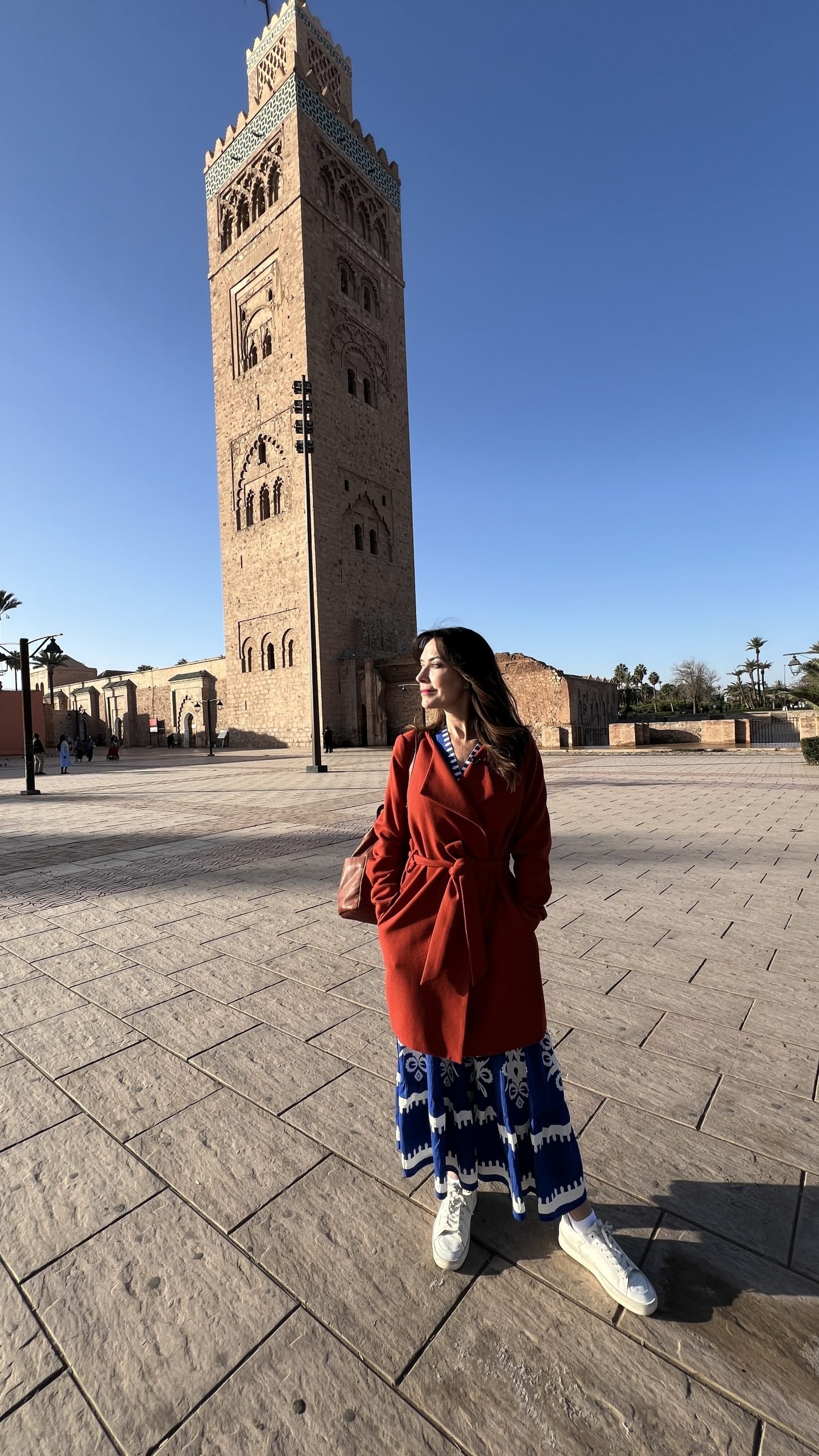
While non-Muslims are not permitted inside, you can still admire the intricate exterior and the beautifully landscaped gardens surrounding it. The mosque’s minaret is a defining feature of the city’s skyline and provides a great photo opportunity.
Bahia Palace
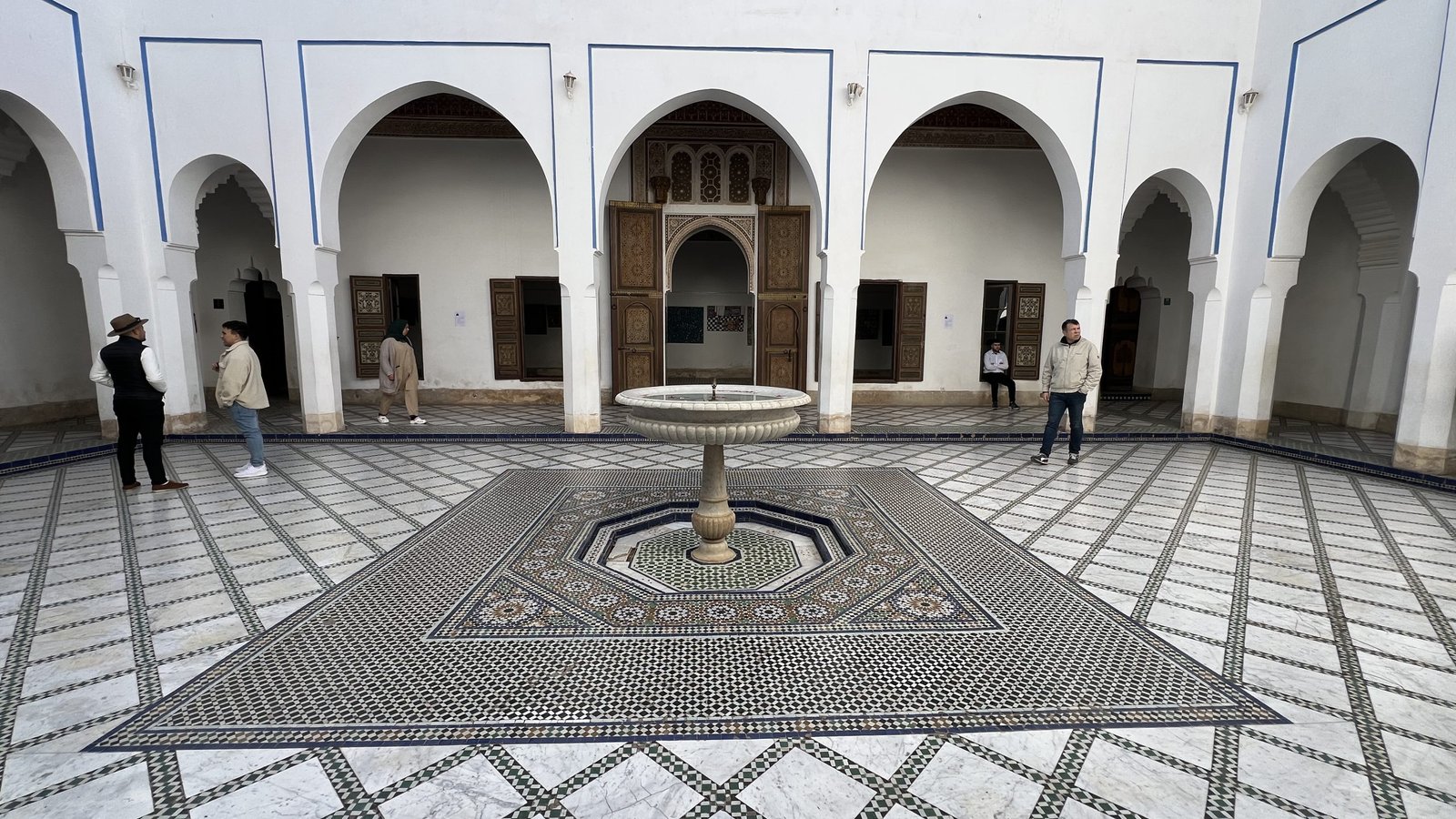
Afterward, head to the Bahia Palace, a 19th-century marvel that showcases the opulence of Moroccan design. Wander through its lush courtyards, ornate rooms, and tranquil gardens, and get a glimpse into the lavish lifestyle of the Moroccan elite.
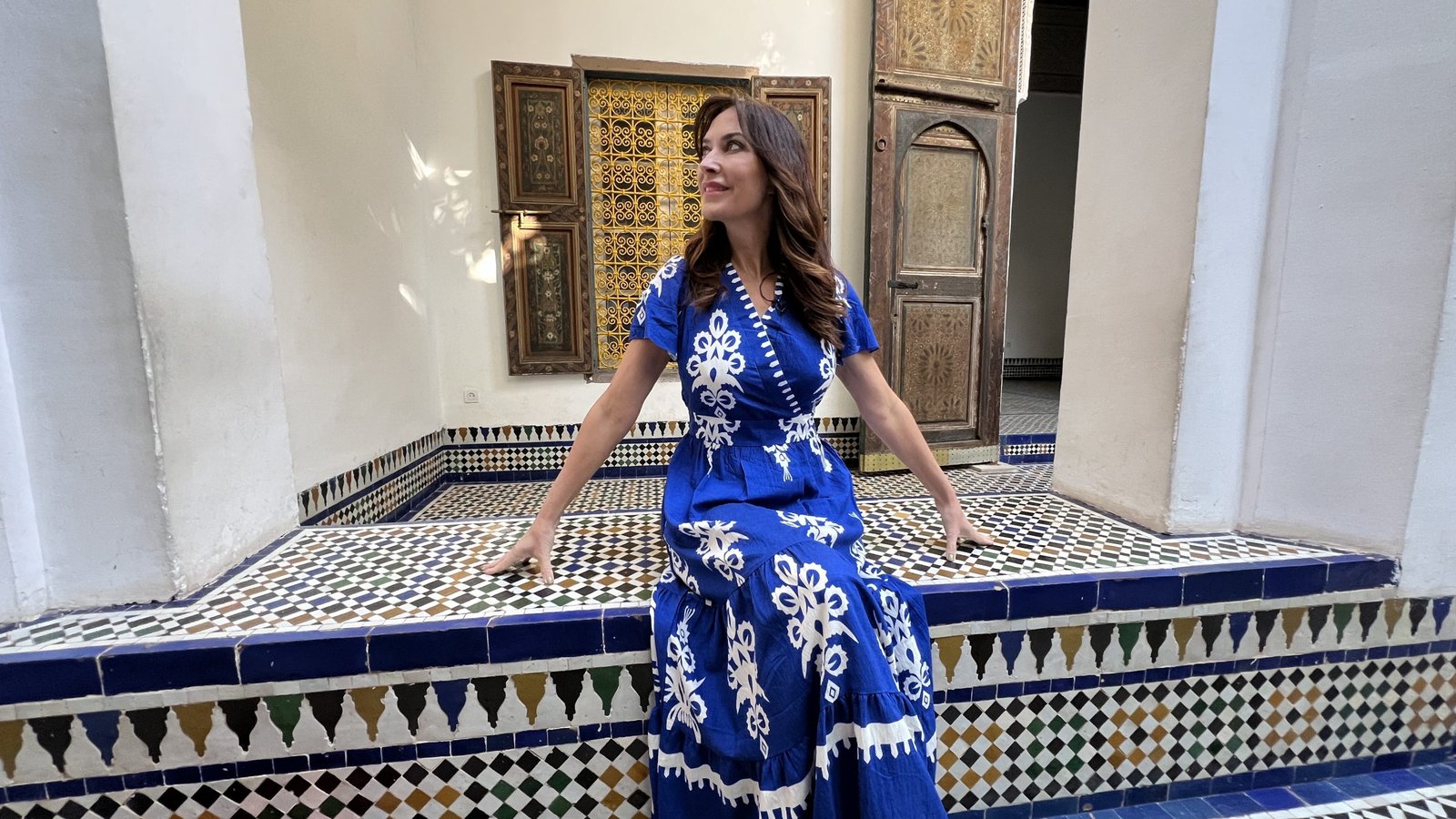
The palace is a true architectural gem, offering a peaceful retreat from the bustling city outside.
Must-Visit Historical Sites and Landmarks
Saadian Tombs
Marrakech is steeped in history, and no visit would be complete without exploring its rich heritage. Begin with a visit to the Saadian Tombs, a hidden treasure that was rediscovered in 1917. These tombs date back to the 16th century and are the final resting place of the Saadian dynasty. Marvel at the intricate tile work, stucco decoration, and the serene atmosphere of this historical site.
El Badi Palace
Next, explore the El Badi Palace, or what remains of it. Built in the late 16th century, this once-grand palace now lies in ruins, but it still retains a sense of its former glory. Wander through the vast courtyard, envisioning the opulence and grandeur that once graced this space. The palace also hosts the annual Marrakech Folklore Festival, adding a touch of cultural vibrancy to the site.
Ben Youssef Madrasa
Another must-visit landmark is the Ben Youssef Madrasa, an ancient Islamic college founded in the 14th century. The madrasa is renowned for its stunning architecture, intricate carvings, and beautifully decorated courtyards. As you explore the dormitory rooms and the central courtyard, you’ll gain insight into the lives of the students who once studied here. The Ben Youssef Madrasa is a testament to the city’s rich educational and architectural heritage.
Where to Eat in Marrakech
Al Fassia
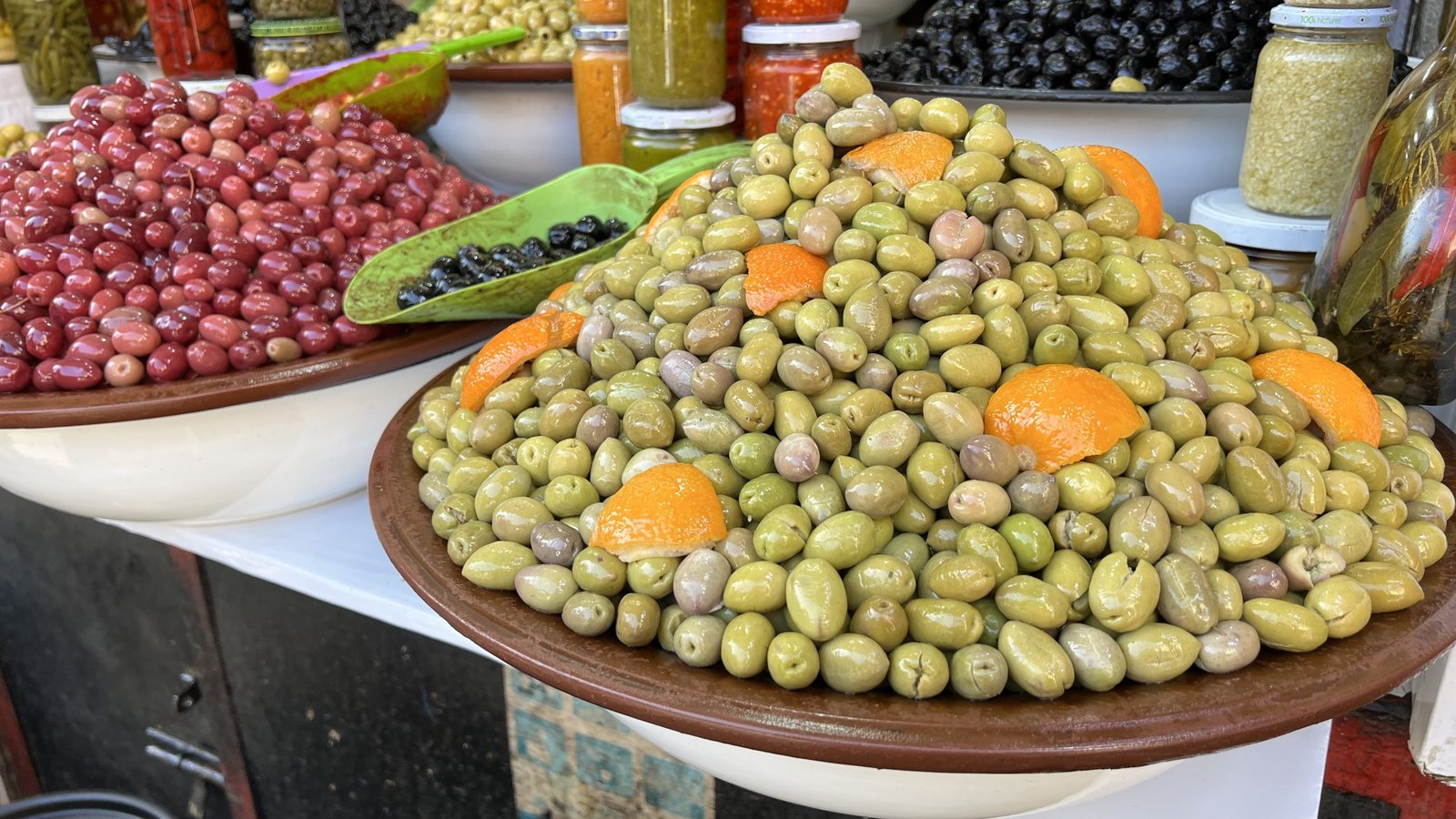
Marrakech’s culinary scene is a feast for the senses, offering a diverse array of flavors and dining experiences. Begin your gastronomic journey at a traditional Moroccan restaurant such as Al Fassia, where you can savor authentic dishes prepared by skilled female chefs. Try the lamb tagine with prunes, a sweet and savory delight, or the chicken pastilla, a pastry filled with spiced meat and almonds.
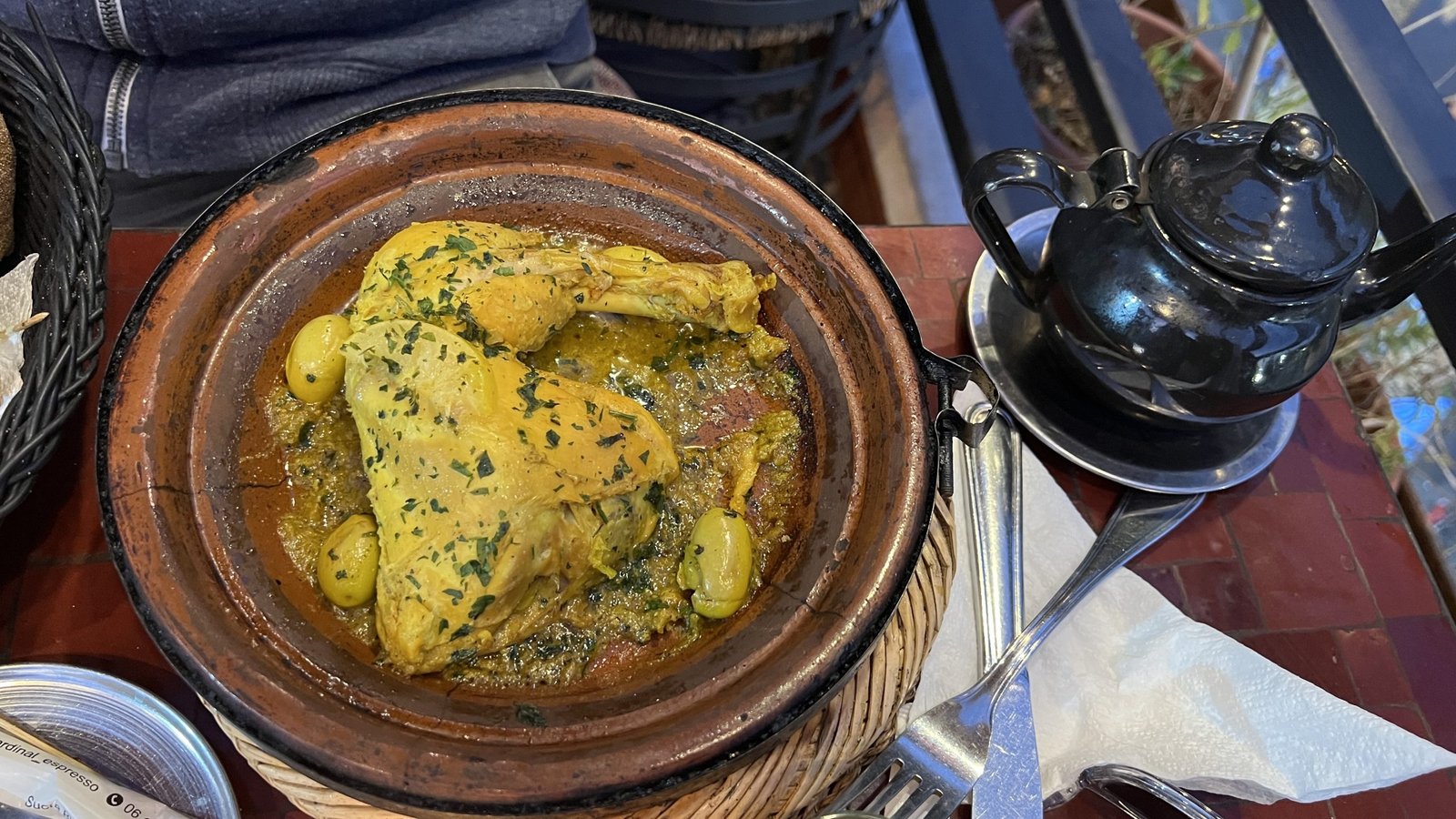
Djemaa el-Fna Square Food Stalls
For a more casual dining experience, head to one of the food stalls in Djemaa el-Fna square. As the sun sets, the square transforms into a bustling open-air restaurant, with vendors serving up everything from grilled meats and seafood to hearty bowls of harira (Moroccan soup) and fluffy couscous. Don’t miss the opportunity to try a traditional mint tea, a refreshing and symbolic drink in Moroccan culture.
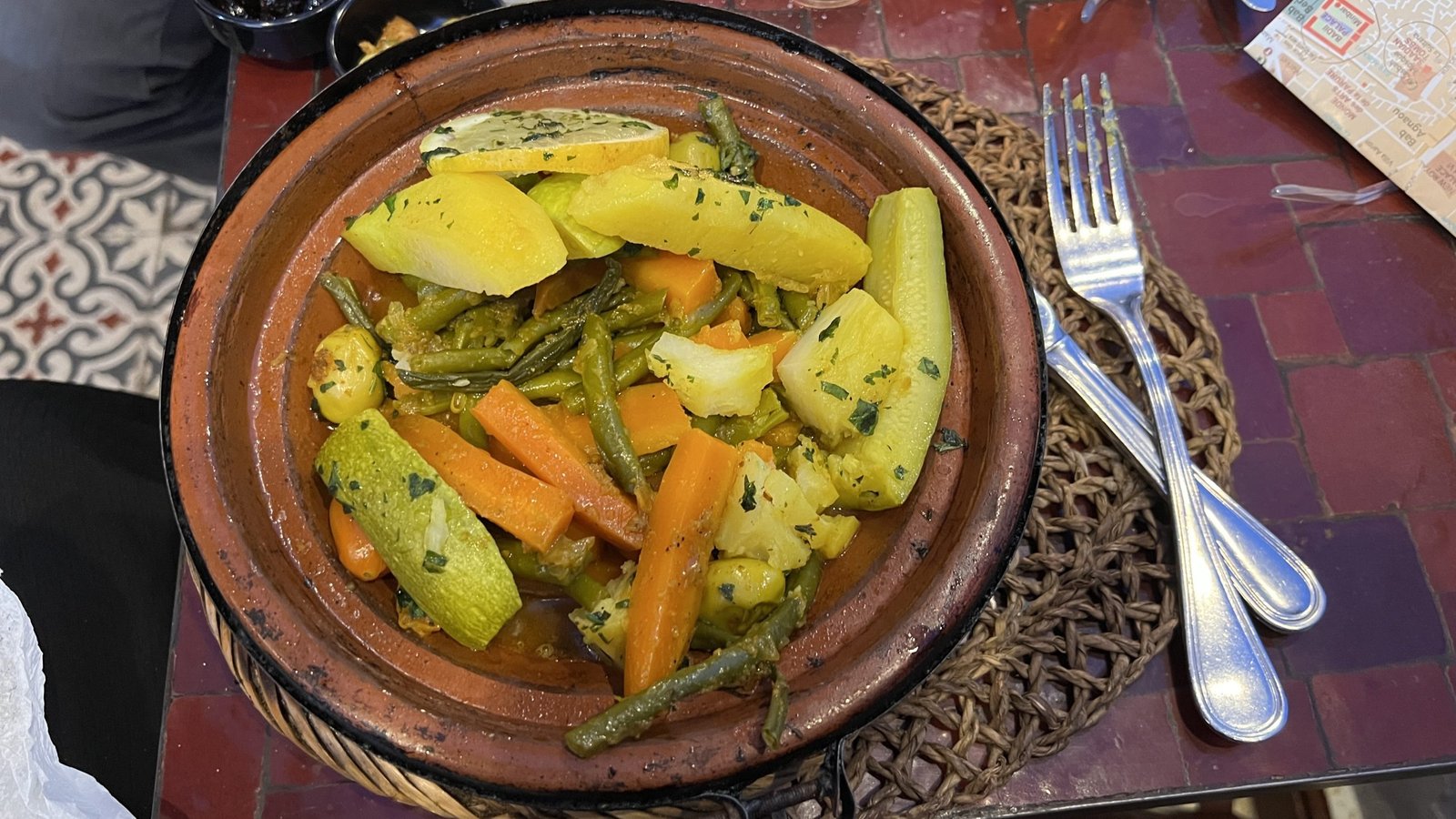
Nomad
If you’re looking for a unique dining experience, visit Nomad, a modern rooftop restaurant that offers a contemporary twist on Moroccan cuisine. With its stylish decor and panoramic views of the Medina, Nomad is the perfect spot to enjoy dishes like spiced lamb burgers, roasted vegetable tagine, and preserved lemon cheesecake. The combination of innovative flavors and a vibrant atmosphere makes Nomad a must-visit for food enthusiasts.
Day 2 Itinerary: Hidden Gems and Local Experiences
Jardin Majorelle
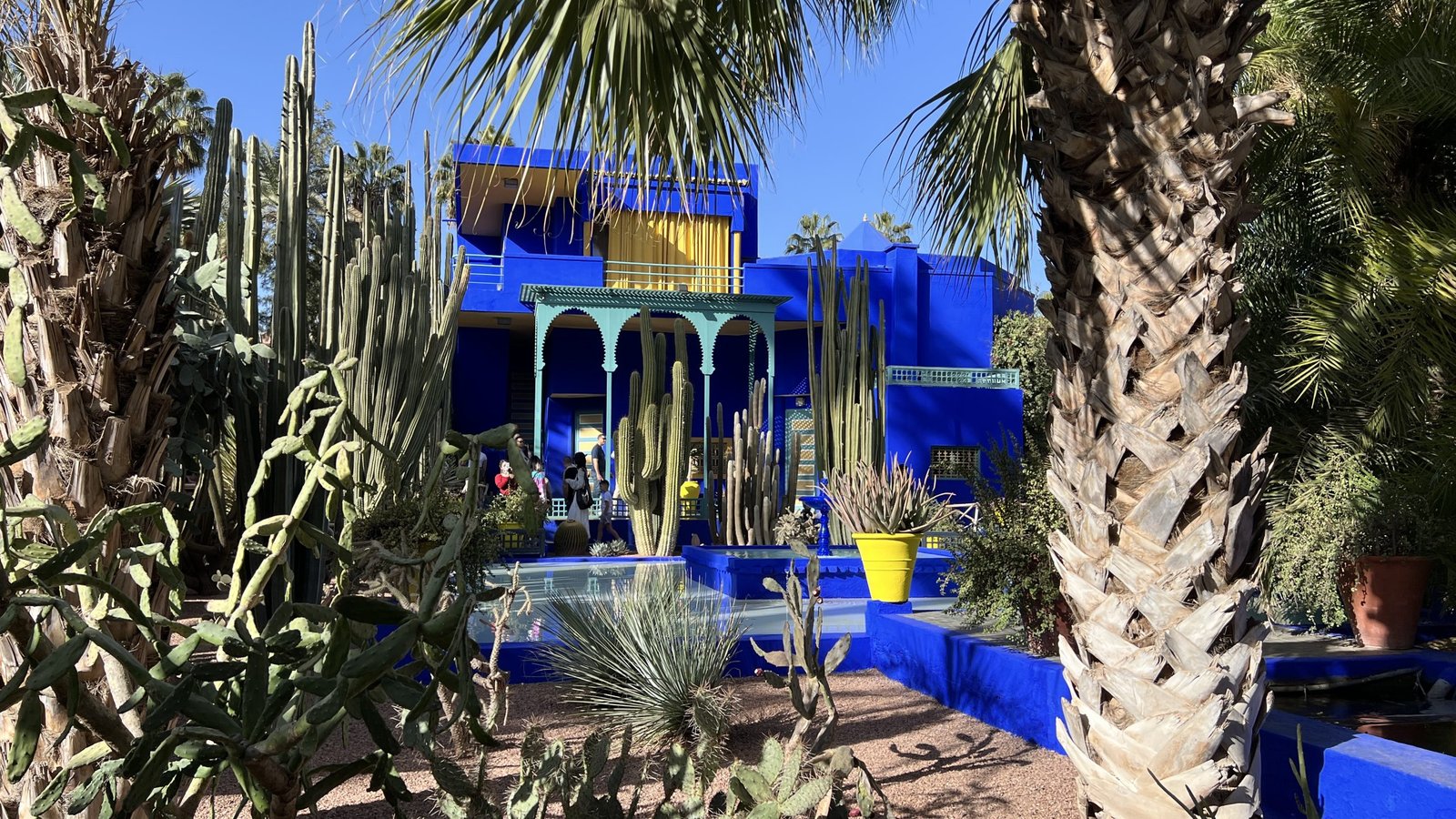
On your second day in Marrakech, venture off the beaten path to discover some of the city’s hidden gems and local experiences.
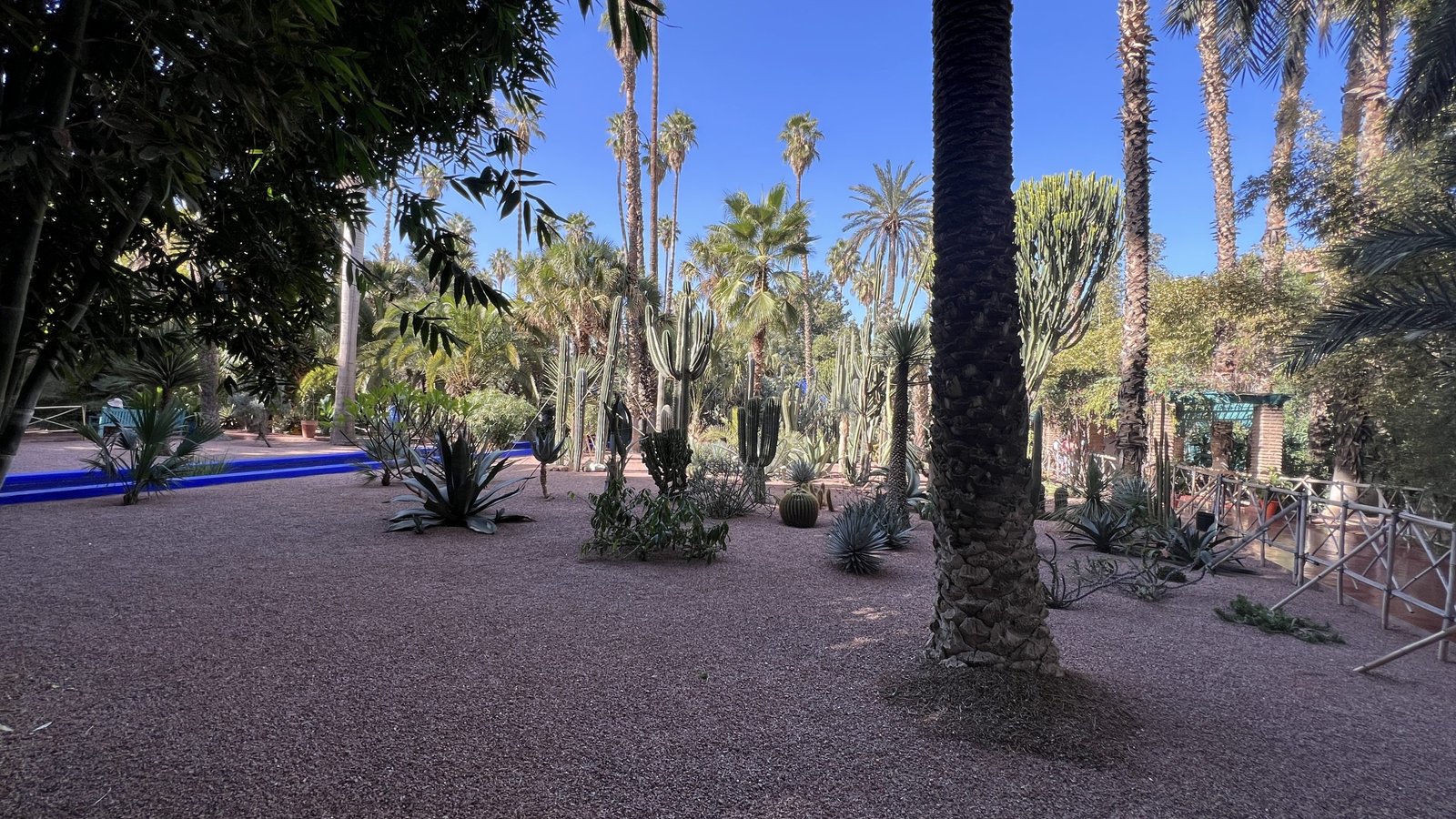
Start your day with a visit to the Jardin Majorelle, a stunning botanical garden created by French painter Jacques Majorelle and later restored by fashion designer Yves Saint Laurent. Stroll through the lush gardens, admire the vibrant blue buildings, and visit the Berber Museum to learn about the indigenous culture of Morocco.
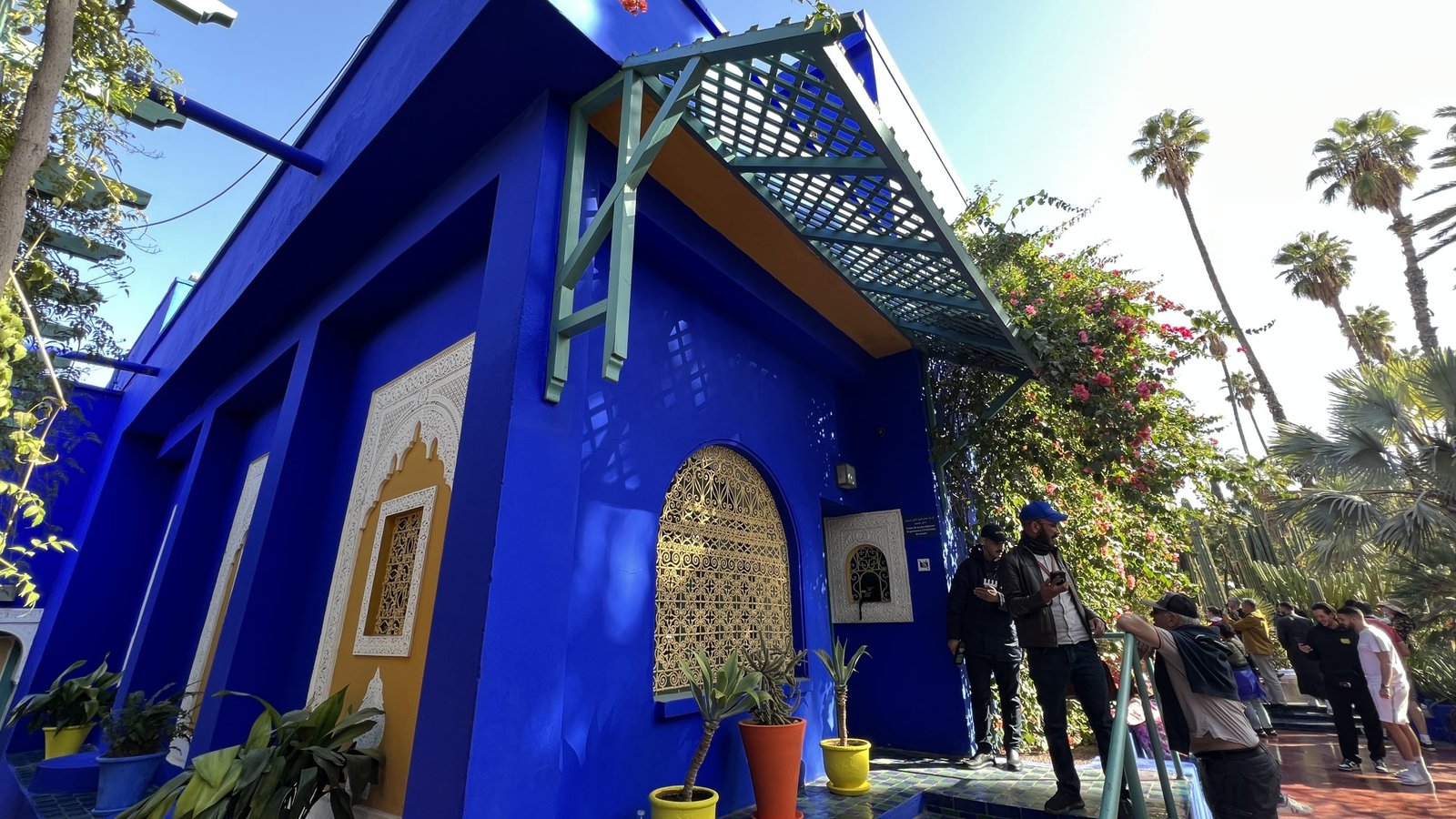
Le Jardin Secret
Next, head to the lesser-known Le Jardin Secret, a beautifully restored garden in the heart of the Medina. This oasis of tranquility features traditional Islamic garden design, with shaded pathways, bubbling fountains, and lush greenery. It’s the perfect place to escape the hustle and bustle of the city and enjoy a moment of peace.

La Maison Arabe Cooking Class
For a more immersive cultural experience, take a cooking class at La Maison Arabe. Learn how to prepare traditional Moroccan dishes under the guidance of expert chefs, and then enjoy the fruits of your labor in a beautiful courtyard setting. This hands-on experience not only teaches you new culinary skills but also provides a deeper appreciation for the rich flavors and techniques that define Moroccan cuisine.
Shopping in the Souks and Markets
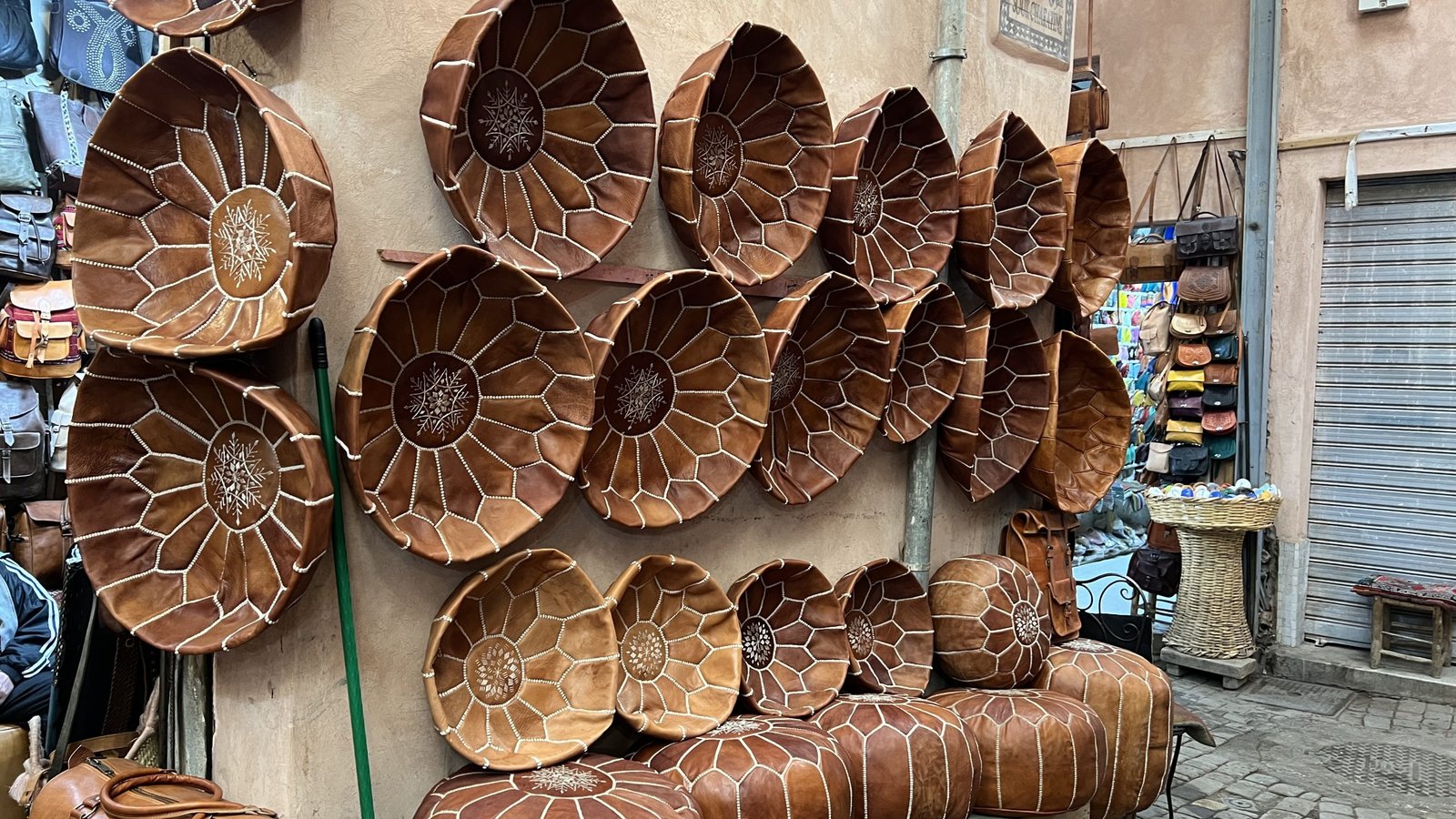
No visit to Marrakech is complete without exploring its vibrant souks and artisan markets. The labyrinthine streets of the Medina are home to an array of stalls and shops selling everything from spices and textiles to ceramics and jewelry.
Souk Semmarine
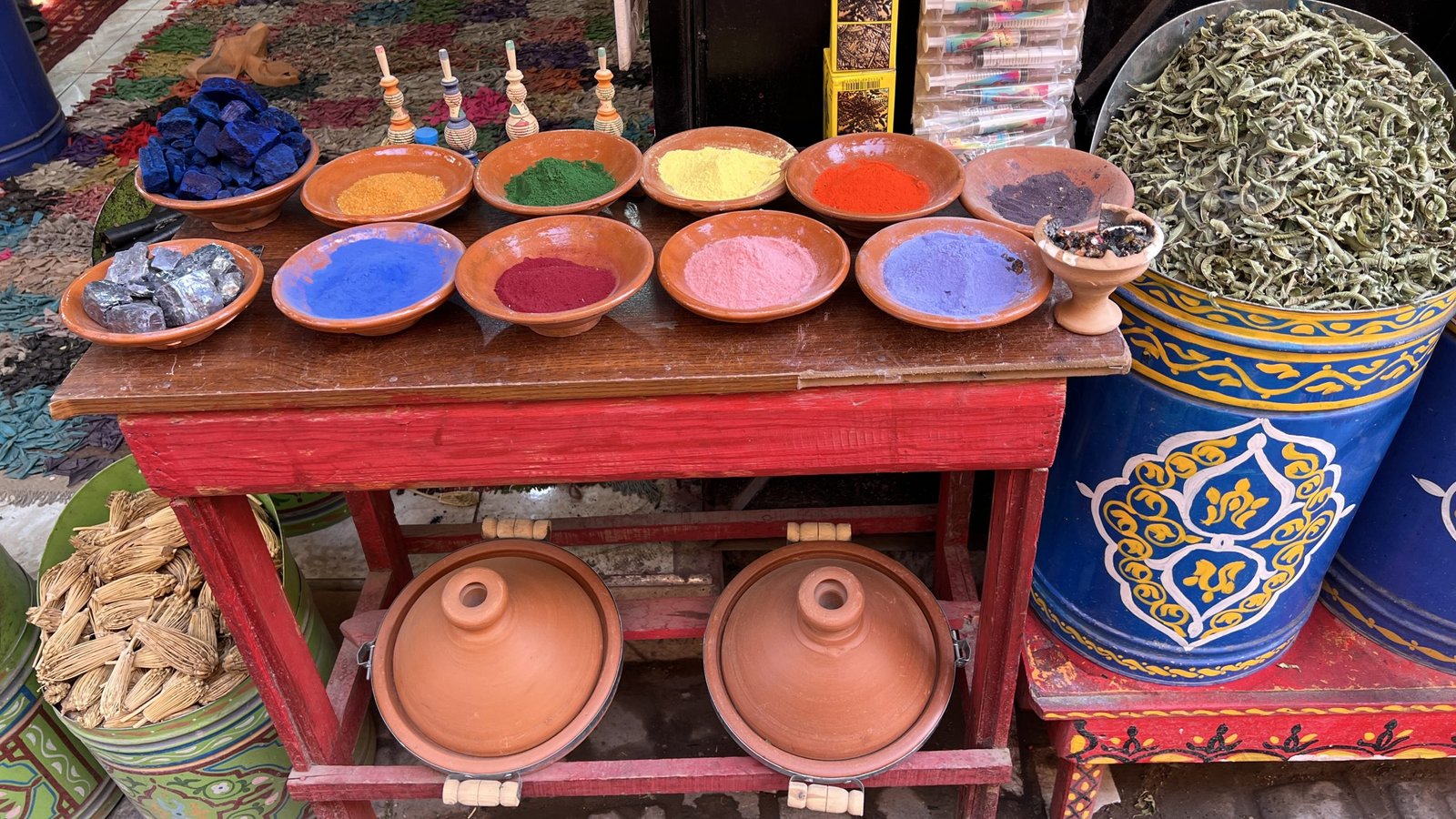
Begin your shopping adventure at the Souk Semmarine, one of the largest and most famous souks in Marrakech. Here, you’ll find a dazzling array of goods, including traditional Moroccan slippers, handwoven rugs, and intricately designed lanterns.
Ensemble Artisanal
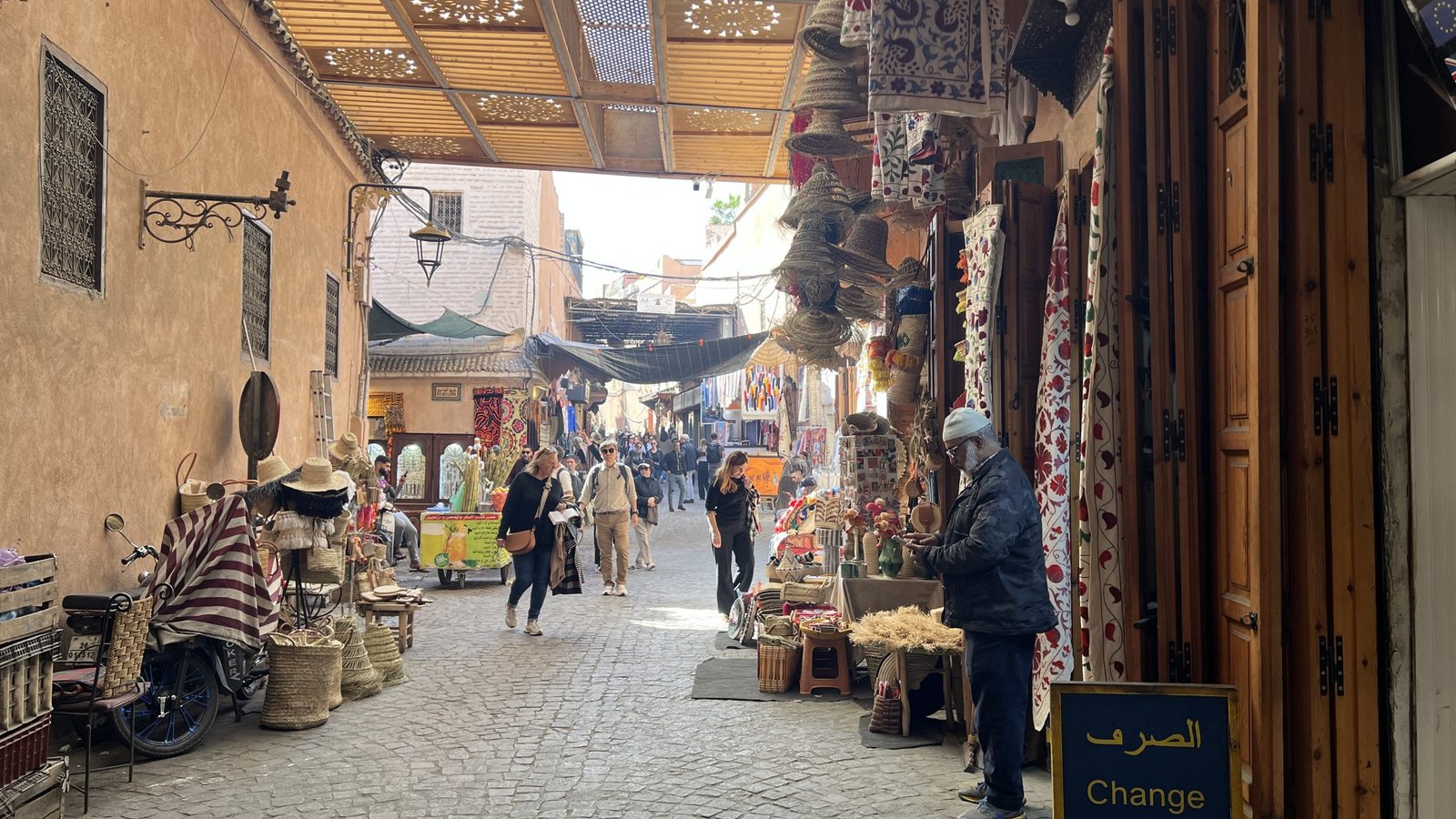
For a more curated shopping experience, visit the Ensemble Artisanal, a government-run cooperative that supports local artisans. This market offers a wide selection of handmade goods, including leatherwork, pottery, and textiles, all at fixed prices. It’s a great place to find high-quality souvenirs and gifts while supporting local craftsmanship.
33 Rue Majorelle
If you’re in the market for unique and contemporary pieces, head to the concept store 33 Rue Majorelle. Located near the Jardin Majorelle, this stylish boutique features a carefully curated selection of clothing, accessories, and home decor from Moroccan designers. From chic kaftans to modern ceramics, 33 Rue Majorelle offers a fresh take on traditional Moroccan craftsmanship.
Cultural Etiquette and Local Customs in Marrakech
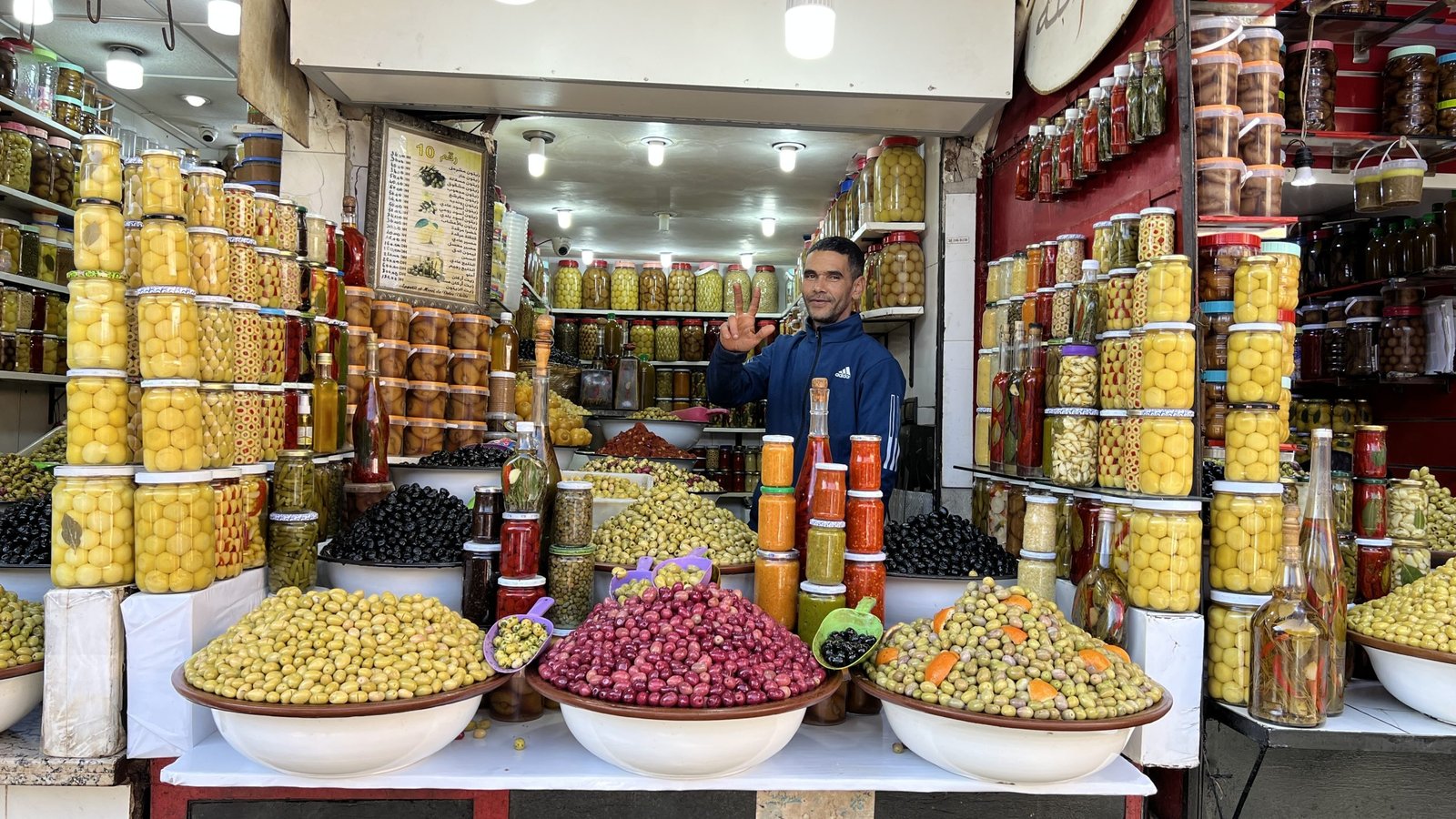
To fully embrace the Marrakech experience, it’s essential to understand and respect the local customs and cultural etiquette. One of the most important aspects is greeting people with a friendly “Salam Alaikum” (peace be upon you), followed by “Shukran” (thank you) to show appreciation. When interacting with locals, especially in the souks, patience and politeness go a long way in fostering positive relationships.
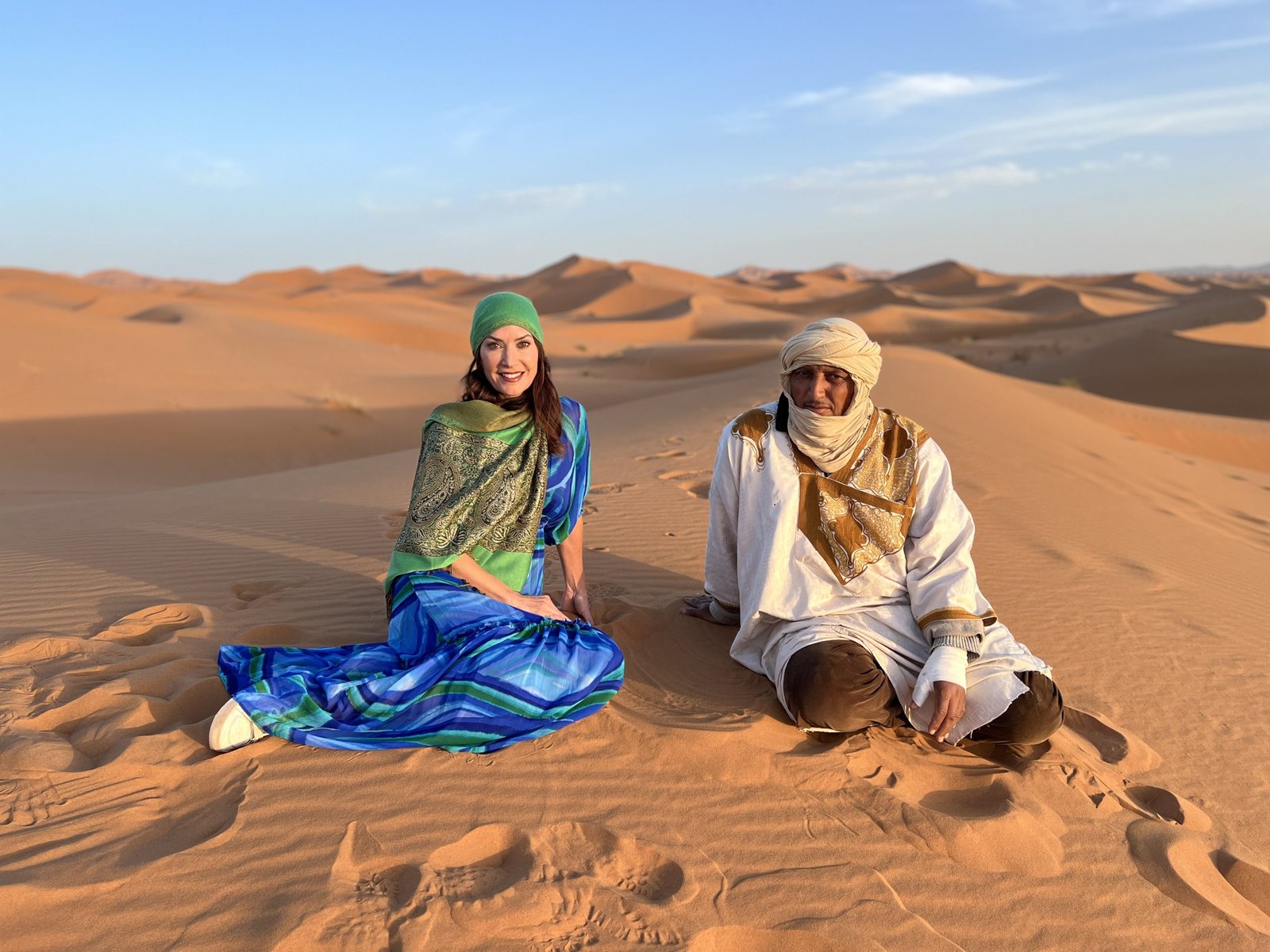
Dress modestly, particularly when visiting religious sites or rural areas. While Marrakech is relatively liberal, covering your shoulders and knees is a sign of respect. Women may also find it useful to carry a scarf for additional coverage when needed. It’s also important to ask for permission before taking photos of people, especially in more traditional settings.
Another key aspect of Moroccan culture is the art of hospitality. If you’re invited into someone’s home, it’s customary to bring a small gift, such as sweets or tea. Remove your shoes before entering and accept any food or drink offered, as declining can be considered impolite. By embracing these cultural norms, you’ll navigate Marrakech with ease and gain a deeper appreciation for the warmth and generosity of its people.
Nightlife in Marrakech: Best Spots for Evening Entertainment
Djemaa el-Fna at Night

As the sun sets, Marrakech comes alive with a vibrant nightlife scene that offers a blend of traditional and contemporary experiences. Begin your evening at the iconic Djemaa el-Fna square, where the daytime hustle gives way to a lively night market filled with food stalls, street performers, and musicians. The square’s energetic atmosphere makes it the perfect spot for an evening stroll and a taste of local delicacies.
La Mamounia Rooftop
For a more sophisticated night out, head to the stylish rooftop bar at La Mamounia, one of Marrakech’s most luxurious hotels. Sip on expertly crafted cocktails while enjoying panoramic views of the city’s skyline and the Koutoubia Mosque. The elegant ambiance and impeccable service make La Mamounia a top choice for a memorable evening.
Comptoir Darna
If you’re in the mood for live music and dancing, visit Comptoir Darna, a renowned nightclub that combines Moroccan and international influences. The venue features a restaurant on the ground floor and a lively nightclub upstairs, where you can dance the night away to a mix of traditional Moroccan tunes and contemporary beats. With its vibrant decor, energetic atmosphere, and diverse entertainment, Comptoir Darna offers an unforgettable nightlife experience.
Making the Most of Your 2 Days in Marrakech
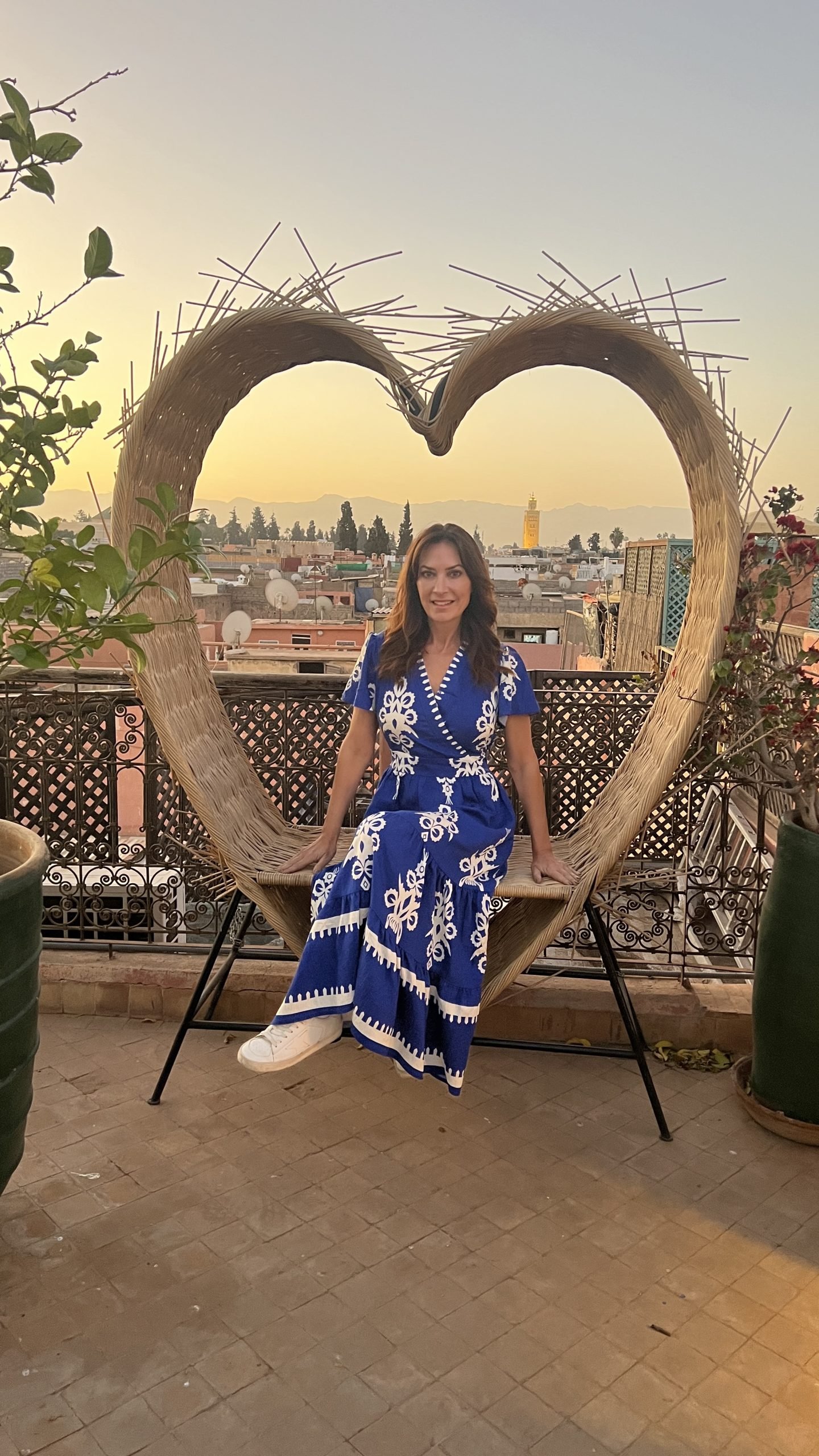
Two days in Marrakech give you just enough time to see how much the city has to offer. You’ll cover a lot, including markets, gardens, palaces, and meals, but it’s the mix of daily life and unexpected details that makes the trip memorable.
You might find your favorite moment at a small food stall, in a quiet courtyard, or during a casual conversation in a shop. The best parts are often the ones you didn’t plan for.
This guide gives you a good place to start, and as you explore, let the city unfold at its own pace. That’s part of what makes visiting Marrakech so worthwhile.
If you have more time, I suggest a day trip to Ourika Valley to hike the waterfalls of the Atlas Mountains and experience Berber culture.
Read More:
Travel Guide to Ecuador: Things To Know Before You Go
8 Unique Iceland Bucket List Destinations: Explore Off-the-Beaten-Path Locations









